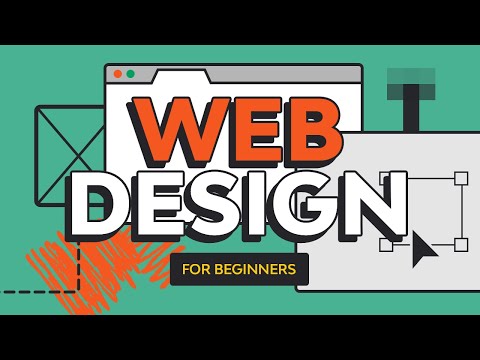Just How to Improve Site Efficiency with Better Web Design
Just How to Improve Site Efficiency with Better Web Design
Blog Article
An Extensive Overview to Recognizing the Key Aspects That Add to Effective Website Design in Today's Digital Landscape
In today's quickly advancing digital landscape, the complexities of successful website design need mindful factor to consider of various fundamental elements. From the critical nature of receptive layout to the nuances of reliable web content approach, each part plays a crucial duty in boosting customer experience and engagement. Comprehending exactly how these aspects interconnect is essential for creating a website that not only brings in visitors however also fosters lasting links. As we check out these essential factors, one may wonder how they can be successfully executed to attain optimum results.
Significance of Responsive Style
In today's electronic landscape, the significance of receptive layout can not be overstated. As individuals significantly access sites with a selection of devices, including mobile phones, tablet computers, and desktop computers, a website's capability to adapt its design and capability to various screen sizes is important. Receptive layout enhances user experience by making sure that web content is conveniently readable and navigable, no matter the device being used.

Trick Principles of Individual Experience
Receptive design lays the foundation for a favorable user experience, which is affected by numerous key principles that lead effective internet layout. One of the primary concepts is simpleness, where a clean and clean user interface permits users to navigate the website easily. This is complemented by user-friendly style, which makes certain that users acknowledge practical components without complication.
Another vital facet is accessibility, making sure that all customers, no matter of their abilities, can communicate with the site. This includes making use of legible typefaces, contrasting shades, and different message for photos. In addition, the concept of uniformity throughout numerous web pages aids customers build familiarity with the site, enhancing their overall experience.

Navigational Framework and Functionality
An efficient navigational framework is vital for boosting usability on a web site, as it straight impacts exactly how conveniently users can discover details and complete their goals. A clear pecking order permits users to intuitively understand the format of a site, helping with smoother navigation and minimizing frustration.
Reliable navigating needs to include a rational collection of associated content, which helps users situate details swiftly. Carrying out main, additional, and tertiary navigation food selections can develop a seamless experience, directing users via numerous levels of content without frustrating them. Uniformity in navigation design across all web pages is vital; individuals ought to always recognize where they are and just how to go back to previous areas.
Additionally, the use of descriptive tags for navigating links is important. Individuals must have the ability to forecast the content of a page based only on the web link message. Browse performance also boosts functionality, allowing customers to bypass the navigation structure altogether if required.
Last but not least, mobile responsiveness has to be thought about, as a substantial part of web website traffic originates from mobile tools. A navigational structure that adjusts to different screen dimensions will make certain usability continues to be high, no matter the platform.
Aesthetic Elements and Branding
Reliable aesthetic components and branding are crucial components of web style, as they not only convey the identity of a brand but also enhance user interaction. A cohesive visual identity, characterized by constant usage of colors, typography, and imagery, establishes recognition and cultivates depend on amongst customers.
Typography is just as vital, as it influences readability and total visual allure. Picking suitable font next page styles that line up with the brand name's personality can boost the message and boost customer experience. Additionally, high-grade visuals, such as photos and video clips, can substantially influence engagement degrees. They should be pertinent, compelling, and optimized for rapid packing to maintain customer attention.

Material Method and Interaction
Establishing a robust content technique is vital for driving individual interaction and fostering meaningful interactions on a site. A well-defined content technique straightens with organization purposes while dealing with the requirements and choices of the target market. It incorporates various elements, including web content production, curation, circulation, and analysis, making sure that the site continues to be relevant and beneficial.
Effective web content needs to be tailored to reverberate with individuals, using a mix of styles such as posts, videos, infographics, and interactive functions. This variety not just records interest but likewise provides to diverse knowing styles and choices. Additionally, utilizing search engine optimization ideal techniques enhances presence, drawing natural traffic to the website.
Engagement is more enhanced via the integration of user-generated material, social sharing alternatives, and contacts us to activity that encourage communication. By cultivating a sense of neighborhood and discussion, sites can grow commitment and encourage repeat gos to.
Last but not this content least, continuous analysis of individual involvement metrics permits continuous optimization of web content strategy, ensuring that the web site adapts to progressing customer needs and preferences (web design). In the affordable digital landscape, a tactical strategy to content is vital for sustained success
Final Thought
In conclusion, effective website design in today's electronic landscape relies on a multifaceted method that incorporates receptive design, user experience principles, user-friendly navigating, natural visual branding, and a critical content structure. Each of these elements plays an important role in boosting user involvement and fulfillment. By focusing on these essential parts, websites can properly meet service purposes while cultivating meaningful connections with their audience, inevitably adding to sustained success in a progressively competitive online environment.
Report this page